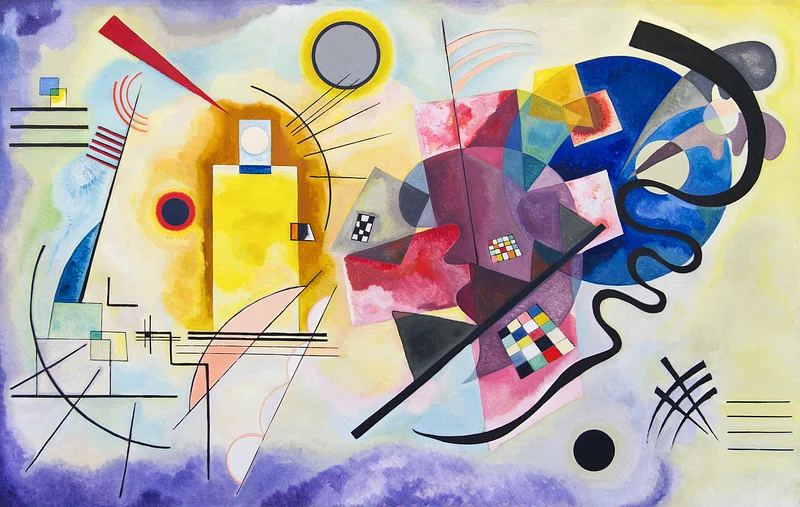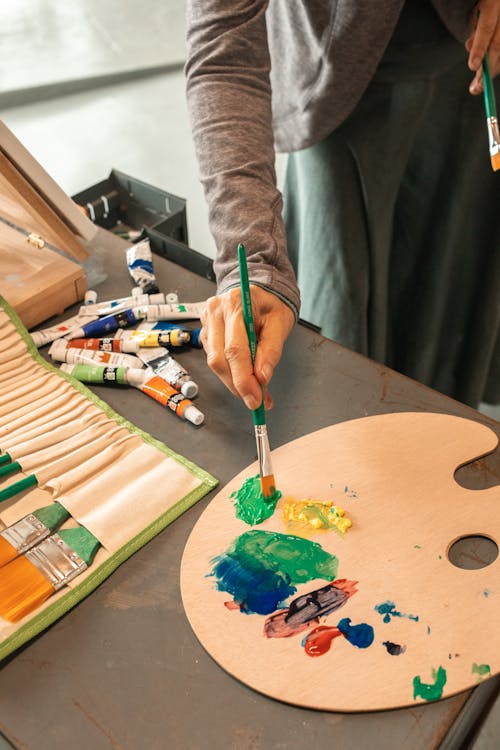6 Honest Questions to Ask Yourself When Revising Your Art (That Aren’t Just ‘Is It Good?’)

Ever stared at your artwork, tilted your head, and thought, “Hmm… something’s off, but I can’t put my finger on it?” It’s like your art is trying to whisper something… but in a language you haven’t fully translated yet.
That, my friend, is the sweet chaos of art revision.
It’s not about fixing mistakes, it’s about deepening your connection to the work. And while artists don’t always call it “editing” the way writers do, we do it just the same: we adjust, tweak, scrape, layer, pause, and return with fresh eyes. This is where the magic happens. Not in making things perfect, but in making them feel true.
So let’s talk about six super honest (and maybe surprisingly fun) questions you can ask yourself next time you find yourself in that murky “almost done?” phase. These aren’t about judgment, they’re about discovery. Let’s dive in.
1. What Emotion Did I Want This to Evoke? Is That Coming Through?
Ask yourself: What feeling sparked this piece? Did you want to stir nostalgia? Joy? Stillness? A storm?
Reconnecting with the original emotional goal helps you evaluate whether the current version aligns, or drifts. Sometimes, we lose emotional clarity during the process. Maybe the color palette shifted the tone. Maybe the composition feels colder than you intended.
Try this: Step away from the piece for a day. Then come back and look at it like a stranger. How does it make me feel now? Is it speaking or muttering?
If your intention was to evoke warmth and tenderness, but the piece now feels stark or chaotic, ask what’s changed. Do you need to soften the transitions? Bring in light? Add a human element?

Even subtle tweaks, like rounding a sharp edge or toning a color, can realign your work with its emotional roots.
This question isn’t about right or wrong. It’s about emotional honesty.
2. What’s Working and Why?
We often hyper-focus on fixing what’s “wrong,” but we forget to name what’s right. Identifying what’s working helps you understand your strengths, and gives you clues for what to keep.
Maybe a texture is deeply satisfying. A shadow gives mood. A brushstroke feels alive.
Pause and ask:
- What part makes me excited when I look at it?
- What element do I keep coming back to?
- What would I fight to keep if someone asked me to redo the piece?
Here’s a trick: Cover parts of your work with paper or your hand. Then reveal them one by one. What makes you smile, even a little? That’s your anchor.
Building from what’s working helps you revise with confidence, not insecurity.
3. Am I Holding Onto Something Just Because It Was There First?
Ah, the “first brush syndrome.”
It’s that element you added early on, a shape, a sketch, a bold mark, that no longer fits, but you’re emotionally attached to it. Maybe it felt bold at the time. Maybe it was hard to make. But now? It’s out of place.
Letting go is hard. But clinging to something just because it came first can block a stronger piece from emerging.
Try this: Ask, If I had to remove three things from this piece, what would they be? Notice if something feels heavy or distracting just because you don’t want to “waste” it.
You’re not betraying your work by editing it, you’re helping it grow. Think of it as pruning a plant. The goal isn’t less. It’s stronger, healthier, more directed.
Revision is often subtraction, not addition.
4. Where Does My Eye Go First? Is That What I Want?
Close your eyes. Open them. Where does your gaze land first?
That’s your focal point. And if it’s not the story you want to tell, something’s off.
Great composition gently guides the viewer. It creates a path. But if your eye zigzags wildly or lands on a random corner of the canvas, you might be dealing with accidental emphasis.

Common culprits:
- A single bold color far from your subject
- An unintentional tangent or border draw
- Sharp contrast or detail in an unimportant area
Ask: Do the visual cues match the emotional or narrative ones? If not, try blurring the background, softening contrast, or adding subtle emphasis elsewhere.
Pro tip: Sometimes even a half-inch shift can rebalance a composition.
5. Am I Avoiding Something That’s Hard to Fix?
Be honest with yourself. Is there an area you keep avoiding because it feels tricky to resolve?
Maybe it’s a hand that doesn’t look right. Or a color choice that clashes. Or negative space that just won’t cooperate.
We all do it. We paint around the problem. Hope no one notices. Delay it until “the end.”
But here’s the thing: That part you’re avoiding? It’s where the piece is quietly asking for your attention.
Sometimes revising is about courage. Not technical skill. Just the courage to go back in.
Try this exercise:
- Write down what bothers you.
- Write why it bothers you.
- Sketch three possible fixes (even silly ones).
Now pick one and try it. What’s the worst that happens? You paint over it again? Good. That’s growth.
6. Does This Feel Like Me? Or Is It Just Well-Made?
There’s a difference between good art and true art. Good art might follow every rule. But true art feels like it could only come from you.
Ask yourself:
- Does this piece reflect my quirks, my voice, my obsessions?
- Is there a detail here that feels playful, surprising, or vulnerable?
Sometimes, revision means loosening up, not tightening down.
Maybe your work is too polished. Too perfect. Too “on trend.” What if you added a rebellious detail? An unexpected material? A quiet imperfection?
Art that lasts doesn’t always impress. It connects.
So if your piece feels complete but a little soulless, try adding one tiny thing that scares you.
A scribble. A color clash. A sentence. Something only you would think to do.
Where to Go From Here: A Mini Revision Ritual
Revision doesn’t need to feel clinical. Make it a ritual. Sit with your piece like it’s a friend, not a problem to fix.
Here’s a simple 15-minute check-in process:
- Look from afar. What jumps out?
- Close your eyes. What do you remember seeing first?
- Ask: What emotion is this giving me?
- Note anything that feels “off” or disconnected.
- Identify 1–2 areas that feel strong, celebrate them.
- Choose one small change to try, just for curiosity’s sake.
Sometimes, revision is about playing, not perfecting.
Bonus: 3 Unconventional Revision Prompts for Artists
Still stuck? Try one of these playful revision prompts:
1. The “Cover Test”
Cover 70% of your piece with paper. What story does the uncovered part tell? Is it strong on its own?
2. The “Improv Rule”
Add something in 30 seconds using only your non-dominant hand. What changes?
3. The “One Word Test”
If this artwork could say one word, what would it be? If you can’t name it, dig deeper.
These aren’t techniques. They’re tiny detours to surprise your process and loosen your grip.
Final Thoughts: Trust, Tweak, Repeat
Revising your art isn’t about correcting mistakes. It’s about making space for the version of your work that feels most alive.
Ask yourself:
- What do I love here?
- What feels fuzzy, forced, or tired?
- What could I tweak, not to fix, but to free the piece up a bit more?
There’s no formula. There’s only curiosity.
And next time you’re deep in the mud of “Is this any good?” ask one of these six questions. Let your art talk back. You might be surprised what it says.
P.S. You don’t need to solve everything in one sitting. Revision is a relationship. Keep showing up for it, with love, with questions, and with paint on your sleeves.
Save this guide for your next creative pause. Or better yet, print it and keep it near your sketchbook. Your future self will thank you.
